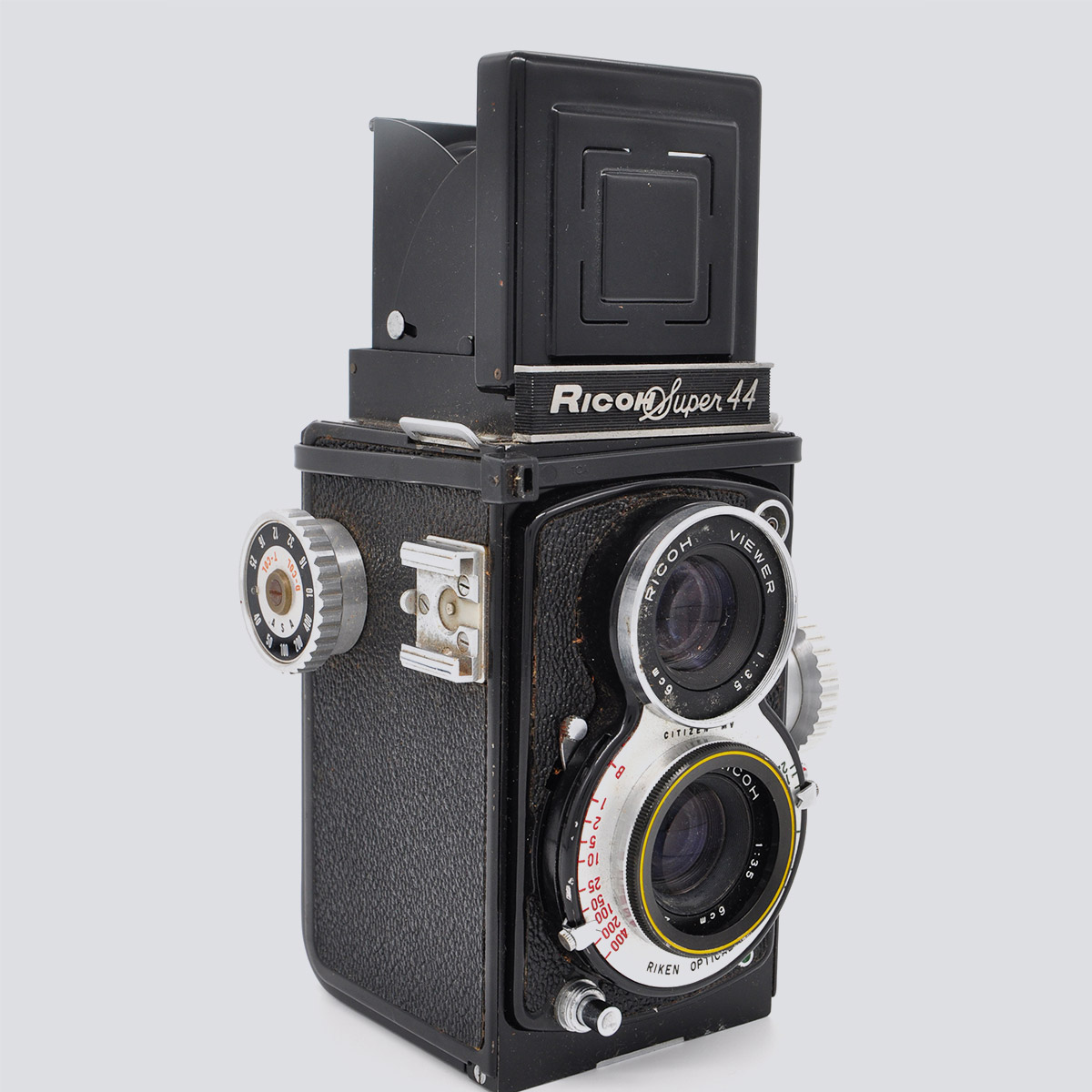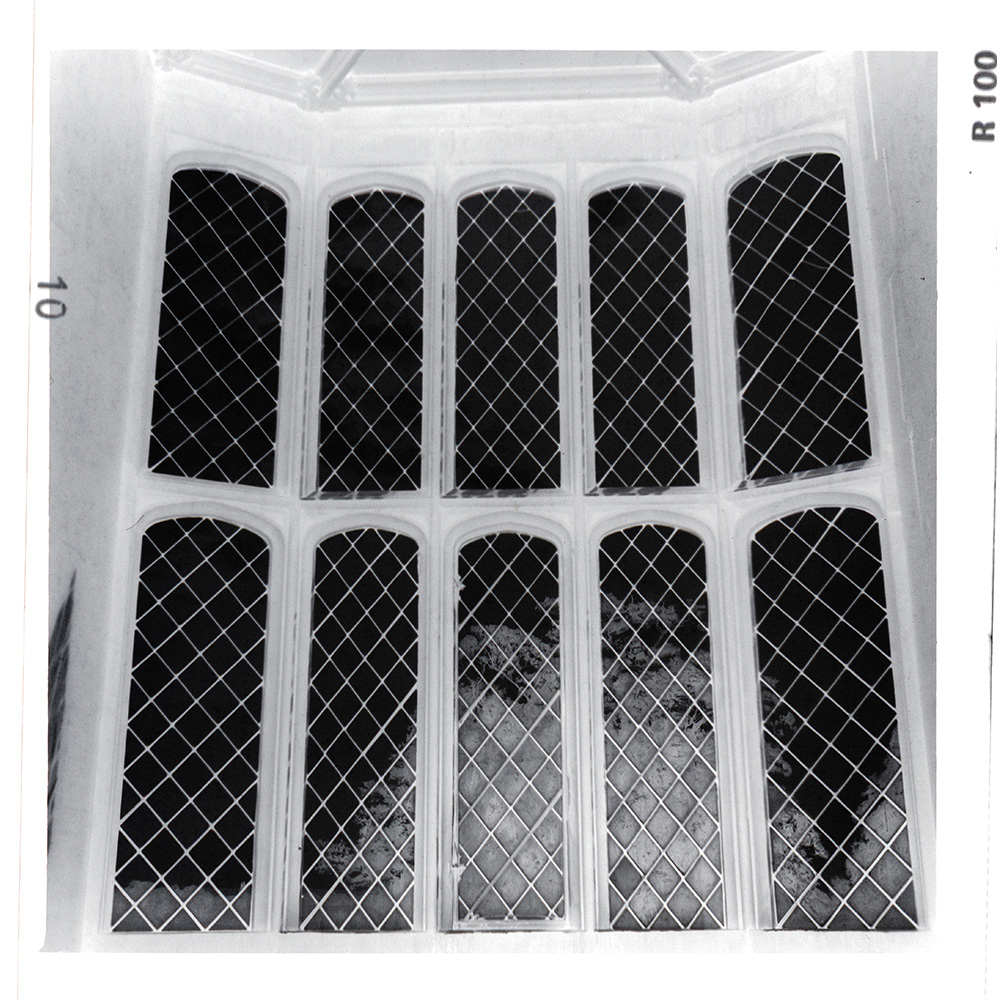Ricoh Super 44
Through its association with many of the great mid-twentieth century photographers, the twin lens reflex camera (TLR) holds a special place in the history of photography. The recently unearthed archive of pictures by Vivian Maier are a case in point, the square format, and waist or chest level view necessitated by the need to see the image on a focussing screen, lend the TLR image a certain look, which many hobby photographers, myself included, aspired to emulate.
Most TLRs use 120 roll film, and shoot the classic 2¼ square (6x6cm) negatives, but there were other formats available too. Aside from the very limited numbers of TLRs made for 35mm film, there were several 127 models, my personal favourite being the Baby Rolleiflex, but other manufacturers also made them, and the Ricoh Super 44 comes from the Japanese maker Riken. The “44” in the name immediately gives the game away as to the format, referring to the 4cm x 4cm negatives, there is also a Ricoh Auto 66, which takes 6x6cm pictures on 120 film. The “Super” probably alludes to the Superslide format which was briefly popular in the late 1950s and early 1960s, in which a large, 40mm square slide was projected using a standard 35mm slide projector, but giving an image with almost twice the conventional area.
Three years ago, I wrote a feature for AP entitled “A fond farewell” in which I lamented the death, after 100 years, of 127 film. In fact, small runs of 127 film are once again available, but at quite a price, certainly only something to be used as a special treat. My fondness for 127 cameras stems from their compact size, often they were scaled down versions of a successful 120 design, and until you see them side by side, it’s not immediately obvious how cute they can be.
I bought my Ricoh 44 from eBay, and paid less than £20 for it, complete with a neat leather case. The three element f3.5 6cm lens seems quite sharp, and the shutter speeds range from 1 second to 1/400th, giving plenty of scope for shooting in the full range of lighting situations. Unlike some of the higher end TLRs, where the film is advanced the correct amount by simply turning a crank, with the Super 44, you have to use the tried and tested red window method to see the frame numbers, not really a hardship, especially as this camera would have been used by amateurs, not the professional wedding photographer for whom the added seconds needed to wind on might have been critical.
Speed wasn’t of the essence for me anyway, particularly when I made the pilgrimage to Lacock Abbey in Wiltshire, the home of photographic pioneer William Henry Fox-Talbot. It was here in 1835 that the world’s very first photographic negative, was made. I located the subject, a lattice window, and stood in front of it with my head bowed, partly out of reverence, but mainly because that is the posture enforced by the waist level finder on a twin lens reflex. After scanning, I decided to leave the image as a negative, so what you see here is pretty much how the great man would have seen it 180 years ago.


